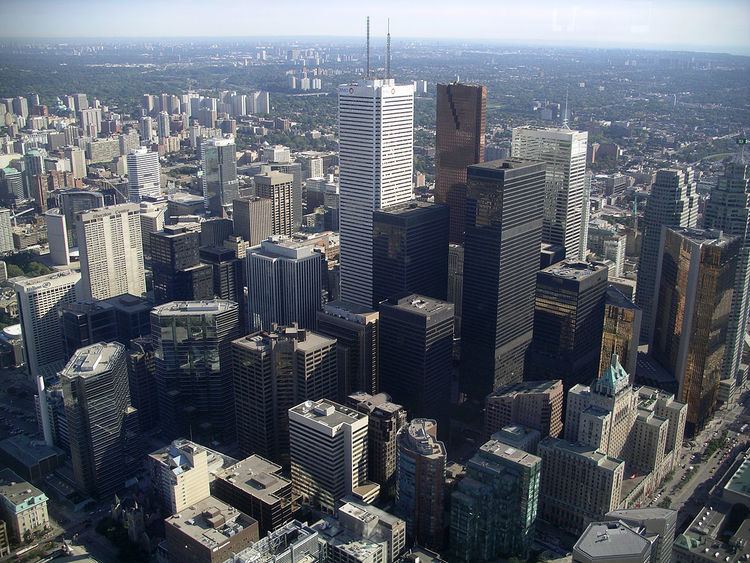Local time Saturday 3:53 PM | ||
 | ||
Weather -6°C, Wind NW at 31 km/h, 51% Humidity Points of interest Hockey Hall of Fame, Design Exchange Restaurants Richmond Station, One King West Hotel & Reside, Canoe, Soup Nutsy, Drake One Fifty Hotels Trump Internatio Hotel & T, Fairmont Royal York, Sheraton Centre Toronto H, One King West Hotel & Reside, The Strathcona Hotel | ||
The Financial District is a business district in Toronto, Ontario, Canada, within the downtown core. It was originally planned as New Town in 1796 as an extension of the Town of York (later the St. Lawrence Ward). It is the main financial district in Toronto, and is the financial heart of Canada. It is bounded roughly by Queen Street West to the north, Yonge Street to the east, Front Street to the south, and University Avenue to the west, though many office towers in the downtown core are being constructed outside this area, which will extend the general boundaries. Examples of this trend are the Telus Tower and RBC Centre.
Contents
- Map of Financial District Toronto ON Canada
- Tallest buildings 140m
- Origins of Financial District
- Business Improvement Area
- Lost Historic Buildings
- Diplomatic Missions and Trade agreements
- References
Map of Financial District, Toronto, ON, Canada
Within the district was the historic Wholesale District along Bay Street from Melinda Street to The Esplanade was destroyed by the Great Fire of Toronto of 1904.
It is the most densely built-up area of Toronto, home to numerous banking companies, corporate headquarters, high-powered legal and accounting firms, insurance companies and stockbrokers. In turn, the presence of so many decision-makers has brought in advertising agencies and marketing companies. The banks have built large office towers, much of whose space is leased to these companies. The bank towers, and much else in Toronto's core, are connected by a system of underground walkways, known as PATH, which is lined with retail establishments making the area one of the most important shopping districts in Toronto. The vast majority of these stores are only open during weekdays during the business day when the financial district is populated. During the evenings and weekends, the walkways remain open but the area is almost deserted and most of the stores are closed.
It is estimated that 100,000 commuters enter and leave the financial district each working day. Transport links are centered on Union Station at the south end of the financial district, which is the hub of the GO Transit system that provides commuter rail and bus links to Toronto's suburbs.
Tallest buildings 140m+
Major skyscrapers and complexes in the financial district include:
Origins of Financial District
The district's origins date back to the mid to late-19th century when a number of early banks had head offices located in Toronto. Most of these banks were regional and came and went. It was not until the second half of the 20th Century that the Big Five banks located their headquarters there.
Of the big banks, only CIBC and Toronto-Dominion Bank (including the banks existing before mergers) had full head offices in Toronto:
Business Improvement Area
The area is represented by the Toronto Financial District Business Improvement Area (BIA) that all commercial businesses in the area belong to. The organization engages in streetscape improvements, addressing key issues that impact the area, and promoting the area's businesses online.
Lost Historic Buildings
The construction of buildings in the district lead to the demolition of 19th and 20th Century buildings:
